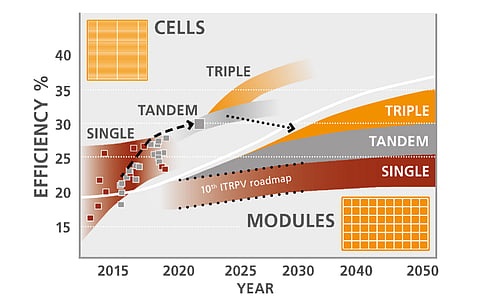Whitepaper On Perovskite Silicon Tandem Cell Characterization
- Wavelabs believes in the potential of PST cell technology, but sees some challenges in it manifesting its full potential
- As against conventionally used xenon-based flasher technology, it recommends flashing the cells on both front and back
- LED-based cell flasher, according to the team, can provide accurate and scalable cell measurement in industrial production of PST cells
Germany's Wavelabs argues that LED-based cell flasher technology is not only simple, accurate and efficient, but also crucial for accurate and scalable cell measurement in the industrial production of perovskite silicon tandem (PST) cells to enable faster rollout of the technology that has achieved a record of over 31.25% efficiency in 2022 (see Record Tandem Cell Efficiency Made In Switzerland).
Calling PST cells as a 'beacon of hope' for a world that's fighting climate crisis, Wavelabs says their efficiency can go up to 45% with further technological advancements at a lower cost thanks to the use of inexpensive raw materials and readapting the well–known production processes from thin film manufacturing.
Currently, however, this technology faces some challenges, especially with regards to IV characterization, which Wavelabs has elaborated in detail in a whitepaper. These range from different saturation behavior, different properties of the individual sub-cells and more demanding current matching.
The company believes that to overcome these challenges, for example, 3- and 4-terminal designs of PST cells, in which the sub-cells are connected in parallel and independently, respectively, need to be flashed both front and back, and not with the conventional xenon-based flasher technology. It recommends LED-based cell flashers that offer the flexibility in spectral match and temporal stability for 'accurate and scalable' cell measurement in industrial production of PST cells.
"Cell flashers for the characterization of PST cells must offer the possibility to take into account the specifics of different cell designs as well as to implement measurement on an industrial scale," explained Wavelabs COO/CTO Dr Patrick Mergell who argues that only LED-based cell flasher technology meets the necessary measurement requirement of PST solar cells in a simple and accurate way, at present.
The whitepaper is available for free download at Wavelabs' website.


